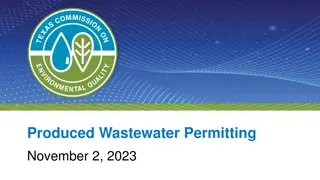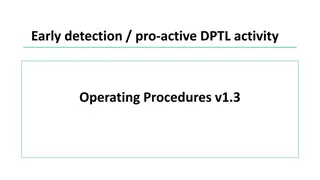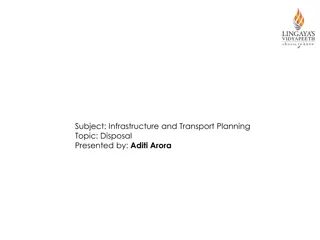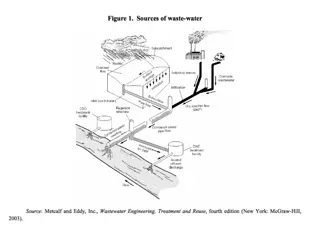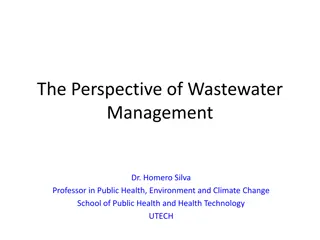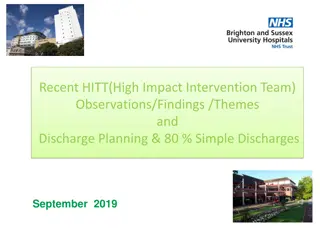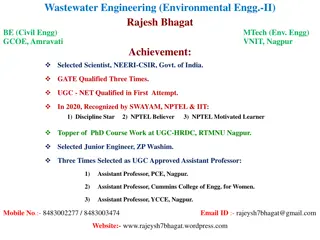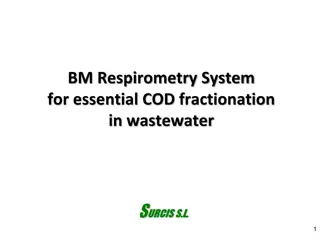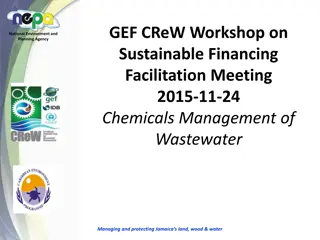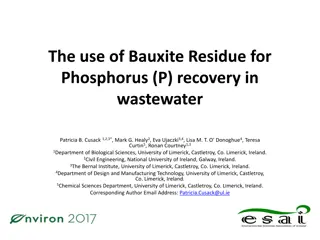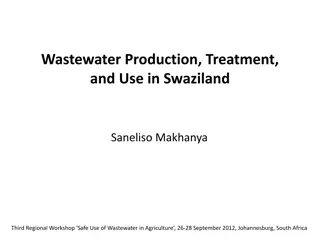Sustainable Wastewater Discharge Solutions for Slough Catchment
Slough Wastewater Treatment Works faces challenges with discharge into Roundmoor Ditch, impacting downstream water quality and flood risk. Various options, such as dredging, tunneling to the Thames, or redirecting to the Jubilee River, are considered to mitigate these issues while ensuring sustainability and compliance with regulations.
Download Presentation

Please find below an Image/Link to download the presentation.
The content on the website is provided AS IS for your information and personal use only. It may not be sold, licensed, or shared on other websites without obtaining consent from the author.If you encounter any issues during the download, it is possible that the publisher has removed the file from their server.
You are allowed to download the files provided on this website for personal or commercial use, subject to the condition that they are used lawfully. All files are the property of their respective owners.
The content on the website is provided AS IS for your information and personal use only. It may not be sold, licensed, or shared on other websites without obtaining consent from the author.
E N D
Presentation Transcript
The current situation Slough Wastewater Treatment Works treats a population equivalent of 249,000 and further growth is forecast in the catchment. It is the 12thlargest of our 351 STW s. It discharges up to 1,150 l/s of treated effluent plus any storm water, to a small chalk stream known as the Roundmoor Ditch. Downstream of the FE outfall, the stream is designated main river. The flow in the river from that point (a third of its total length) is 95% sewage effluent. 7 out of the 10 reasons for not achieving good status are water industry . Typically, when sewage effluent is discharged to a watercourse, it is highly diluted by river water. In the case of the Roundmoor, the reverse is true. 8
Why we need to look at the discharge point Issue There is significant growth in the catchment and the EA has said no more flow must go into the Roundmoor A new Ammonia limit of 1mg/l comes into force in 2025, to mitigate against the lack of dilution of the effluent Impact By law, we must accept the additional flow and it must go somewhere We need to upgrade the works and plan for future growth - discharge to a larger watercourse would mitigate the impact of growth The river becomes choked and flood risk increases Exacerbates flooding on Dorney Common and raises concerns about health risks Nutrients in the effluent stimulate weed growth In wet winters, infiltration into sewers causes the works to discharge storm water for prolonged periods 9
Outcomes What must happen Continue to treat wastewater as a statutory duty Discharge of effluent and stormwater Discharge of additional flow that can t go to the Roundmoor Comply with discharge permit What people have asked for Reduced flood risk No exposure to stormwater A river roughly the size it is now Ability to turn off the river during riparian maintenance Ensure sustainability and affordability 10
Option 1. Work required Dredging/enlarging the channel of the Common and Colenorton Brooks. Removal of hydraulic restrictions e.g. bridges, culverts. Pros Cons Reduces flood risk to Roundmoor and common Lower cost/carbon Increases flood risk on Common and Colenorton Brooks Significant stakeholder issues e.g. Eton College Redistribute the effluent between the Roundmoor and the Common Brook 2km tunnel to Thames and possibly a pumping station Reduces flood risk to Roundmoor and common Removes all sewage- derived flow from common Adequate dilution Significant cost and environmental impact Roundmoor would revert to its natural size and flow 2. Discharge to the River Thames Extension of existing gravity outfall into the Roundmoor, to the Jubilee Reduces flood risk to Roundmoor and common Removes all sewage- derived flow from common Adequate dilution Low cost and environmental impact No need for pumping and associated carbon impact Would require planning consent Could face opposition from critics of the Jubilee Roundmoor would revert to its natural size and flow 3. Discharge to the Jubilee River 11



